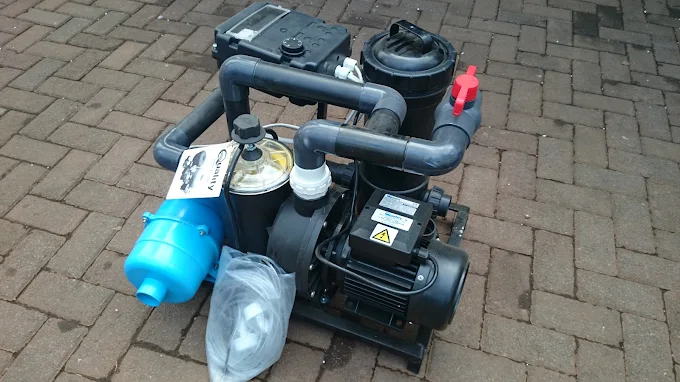
In an era marked by heightened environmental awareness and critical scrutiny of industrial practices, the recyclability of plastic products has emerged as a focal point in both academic and public debates. Among the key players in the disposable packaging sector, Dart Plastics, a division of Dart Container Corporation, occupies a particularly contested position. Known primarily for its expansive range of single-use containers, foam cups, and plastic utensils, Dart’s contribution to the discourse on sustainability is complex, situated at the intersection of technological possibility, infrastructural limitation, and shifting regulatory frameworks.
This article critically examines the recyclability of Dart plastic products, interrogating claims of sustainability and exploring the practical, theoretical, and political dimensions of waste management as it relates to single-use packaging.
Conceptualizing Recyclability: Beyond Material Properties
Before turning to Dart Plastics specifically, it is worth clarifying that the term “recyclable” is often deployed ambiguously. In technical terms, a product may be recyclable in principle—that is, capable of being reprocessed under certain conditions—without necessarily being recycled in practice. This conceptual distinction, as scholars such as Gregson and Crang (2010) have argued, reveals the gap between material potentiality and systemic functionality.
Thus, to claim that Dart products are recyclable is to invite further inquiry into the infrastructure, economic incentives, and behavioral norms that mediate whether such recycling actually occurs. In the absence of comprehensive municipal capabilities and coordinated consumer education, recyclability risks becoming a hollow signifier—a gesture toward environmental responsibility that lacks substantive follow-through.
EPS Foam: A Material Under Scrutiny
Central to this discussion is expanded polystyrene (EPS) foam, a lightweight and insulating material widely used in Dart’s food and beverage containers. While EPS offers logistical advantages—thermal insulation, low cost, and shock absorption—it is also among the most controversial packaging materials from an environmental perspective.
Technically speaking, EPS can be recycled. Dart Plastics has made this point repeatedly in public statements and promotional materials, emphasizing that its foam products are identified by resin code #6, which denotes polystyrene. However, the mere presence of a resin code does not ensure local acceptance or processing. Many curbside recycling programs in the United States and elsewhere do not accept EPS due to contamination risks, high volume-to-weight ratios, and the economic inefficiency of transporting and processing such lightweight material.
Dart has attempted to address these challenges through proprietary programs like Recycla-Pak and participation in foam densification initiatives, which aim to compact EPS for easier transport and recycling. Nevertheless, access to these programs remains geographically uneven and often relies on institutional partners such as schools or businesses rather than individual households.
Post-Consumer Materials and Product Innovation
In response to growing public concern over plastic pollution, Dart has expanded its offerings to include products that incorporate post-consumer recycled content (PCR). Notably, its Eco-Forward™ product line features items made from recycled PET (polyethylene terephthalate) and molded fiber, both of which have a comparatively more established recycling infrastructure.
While these efforts signal a degree of corporate responsiveness, they must be evaluated critically. The incorporation of PCR does not inherently resolve systemic waste challenges. As Zink and Geyer (2017) contend, closed-loop recycling—where a product is recycled into the same product type—remains rare, particularly in food service packaging, where contamination and quality standards limit recyclability. More often, products are downcycled into lower-grade materials, thereby postponing rather than preventing eventual landfill disposal.
Moreover, the emphasis on “green” product lines may contribute to green consumerism, wherein sustainability is framed as a matter of individual purchasing decisions rather than systemic reform. In this sense, Dart’s recyclable product lines could be interpreted as a form of “eco-efficiency” (Hawken et al., 1999), which prioritizes incremental gains within existing production models rather than transformative change.
The Role of Municipal Infrastructure and Policy
Another critical factor shaping the recyclability of Dart products is the high variability in municipal waste infrastructure. Even within a single country, recycling capabilities differ substantially between urban and rural areas, and between wealthier and under-resourced municipalities.
For example, while some cities have adopted advanced multi-stream recycling systems capable of sorting and processing a wider array of materials, others lack the facilities or political will to support such programs. As a result, products that are technically recyclable—such as Dart’s plastic containers or lids—may still be diverted to landfills if local infrastructure is inadequate.
Policy interventions such as Extended Producer Responsibility (EPR) laws and single-use plastic bans further complicate the picture. In states like California, Dart has faced increased regulatory pressure, leading to legal challenges and shifts in production strategies. Whether such measures prompt meaningful changes in product design or merely lead to regulatory arbitrage—where companies shift production to less stringent jurisdictions—remains an open question.
Behavioral and Cultural Considerations
It is important not to overlook the role of consumer behavior and cultural norms in determining the fate of recyclable materials. Studies in behavioral economics and environmental psychology suggest that confusion about what can and cannot be recycled—often exacerbated by inconsistent labeling and lack of public education—significantly impedes recycling rates.
Dart has taken steps to address this by offering educational resources and standardized product markings. However, the efficacy of such interventions remains uneven and under-studied. More rigorous research is needed to determine whether these efforts materially improve recycling outcomes or function primarily as public relations tools.
Corporate Narratives and the Politics of Responsibility
From a critical perspective, Dart’s discourse around recyclability reflects broader patterns in corporate environmentalism. By framing recyclability as a function of consumer behavior and municipal policy, Dart arguably externalizes responsibility for waste management. This rhetorical strategy aligns with what environmental theorists such as Nixon (2011) have called “slow violence”—the gradual, often imperceptible displacement of ecological harms across time and space.
At the same time, it would be reductive to dismiss all of Dart’s initiatives as merely symbolic. The firm’s investment in densification equipment, recycling education, and alternative materials suggests a level of engagement that exceeds mere compliance. Nevertheless, the broader systemic dynamics within which Dart operates—market pressures, policy fragmentation, and infrastructural inertia—must also be acknowledged as constraints on even the most well-intentioned corporate programs.
Conclusion: Conditional Recyclability in an Uneven System
In light of the foregoing analysis, one might conclude that Dart plastic products are, at best, conditionally recyclable. That is, their recyclability depends not only on material composition but also on a constellation of infrastructural, regulatory, and behavioral factors that vary across contexts. The company’s efforts to improve sustainability through design and outreach are notable, yet they remain embedded in a broader industrial paradigm that continues to prioritize disposability and volume over circularity and restraint.
Future research would do well to examine the longitudinal impacts of Dart’s recycling initiatives, particularly in relation to shifting public policy and evolving consumer expectations. Only through such sustained inquiry can we move beyond surface-level assessments and engage meaningfully with the complex realities of sustainability in the plastics industry.




